Safe FIBC Handling Guidelines – Cranes, Hoists, & Forklifts
It is crucial that you take great care when handling FIBCs. Full bags are extremely heavy (some weighing up to 5,000 lbs.) and when not…
When FIBCs are filled and discharged, the flowing of the finely powdered substances can cause a buildup of static electricity. Removing and or preventing an electrical charge is imperative in the packaging of flammable and combustible materials OR in an environment where combustible dust is present. National Bulk Bag will work with you to determine the right type of fabric to ensure safe handling of your product.
For more information on types of bags, see our “Static Electricity in FIBCs: How to Avoid the Dangers of Storing Combustible Products” blog post by clicking here. To speak with one of our experts to determine which type of bag is right for your application, click here to fill out our “Get Quote” contact form or call us at 1-888-237-4224.
There are four specific types of bags, each with unique features and safe uses. Please take some time to read about the different types of FIBC fabric and how they should and should not be used.
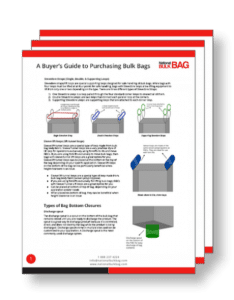
Download Our Buyer’s Guide
It’s our mission to make your buying experience easy, informative, and enjoyable. Our buyer’s guide includes critical information ranging from types of bags to important safety information about handling and transportation.
Click the button below to download our comprehensive buyer’s guide.
When FIBCs are filled and discharged, the flowing of the finely powdered substances can cause a buildup of static electricity. Removing and or preventing an electrical charge is imperative in the packaging of flammable and combustible materials OR in an environment where combustible dust is present. National Bulk Bag will work with you to determine the right type of fabric to ensure safe handling of your product.
For more information on types of bags, see our “Static Electricity in FIBCs: How to Avoid the Dangers of Storing Combustible Products” blog post by clicking here. To speak with one of our experts to determine which type of bag is right for your application, click here to fill out our “Get Quote” contact form or call us at 1-888-237-4224.
There are four specific types of bags, each with unique features and safe uses. Please take some time to read about the different types of FIBC fabric and how they should and should not be used.

Download Our Buyer’s Guide
It’s our mission to make your buying experience easy, informative, and enjoyable. Our buyer’s guide includes critical information ranging from types of bags to important safety information about handling and transportation.
Click the button below to download our comprehensive buyer’s guide.
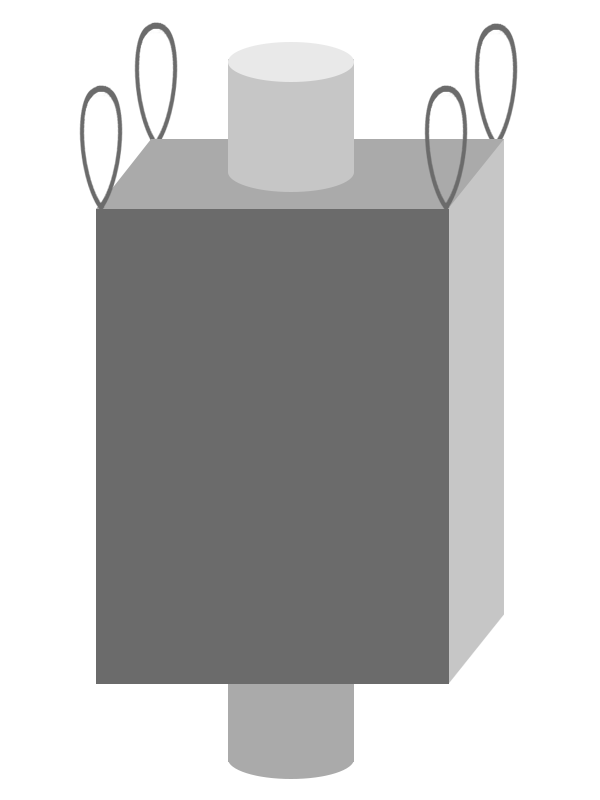
Type A FIBCs are made of plain-woven polypropylene and other non-conductive fabrics. Static electricity is generated as products move over or rub against the inside surface of the bulk bag when they are filled/emptied. There is no static protection provided by Type A FIBCs.
Type A bulk bags can be used to safely transport non-flammable products. There should not be any flammable solvents or gases present around a Type A FIBC.
Safe use for type A bulk bags:
Do not use type A bulk bags for:
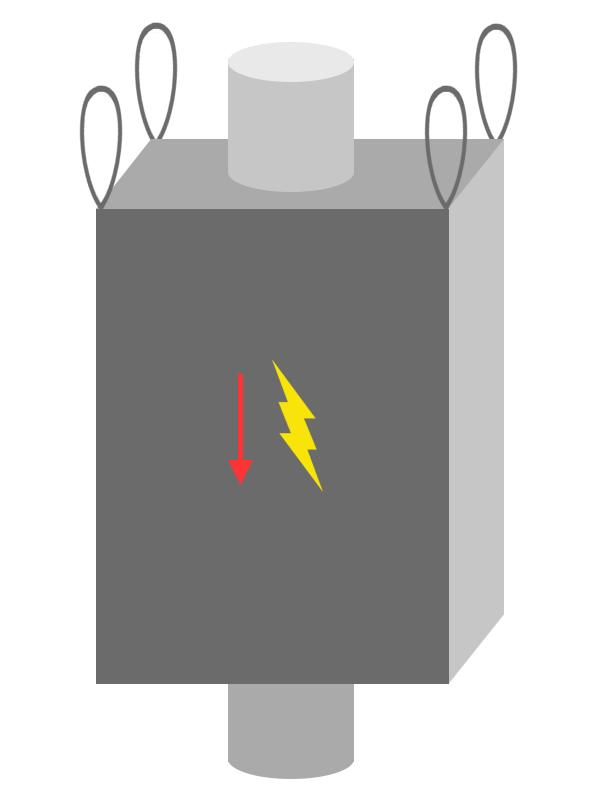
Type B FIBCs are similar to Type A bulk bags in that they are made of plain-woven polypropylene fabrics or other non-conductive material. Also like Type A bulk bags, Type B bags do not have any mechanism for dissipating static electricity.
The difference between Type A & B FIBCs is Type B are made from materials that have a low breakdown voltage to prevent an incident where highly energetic, and dangerous propagating brush discharges occur. Although Type B bulk bags can prevent propagating brush discharges, they are not considered anti-static bulk bags because they do not dispel an electrostatic charge.
Safe use for type B bulk bags:
Do not use type B bulk bags for:
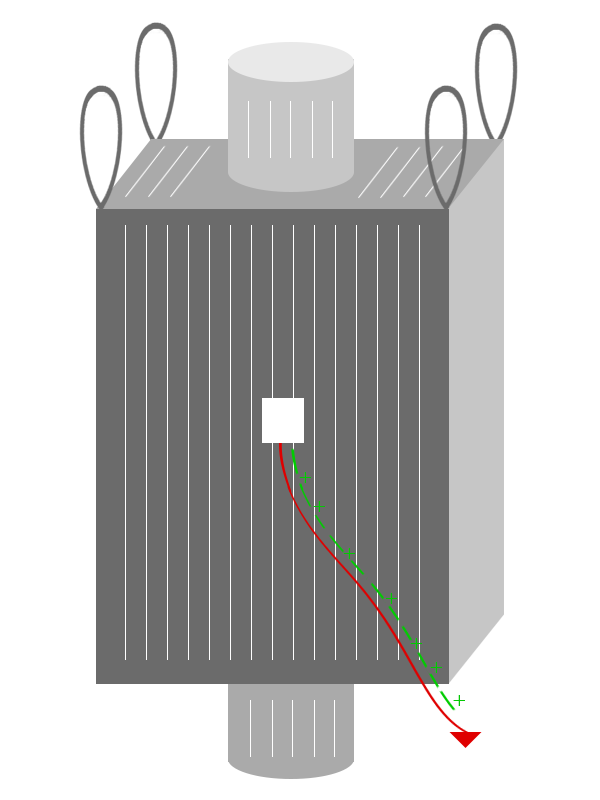
Type C FIBCs, also known as conductive FIBCs or ground-able FIBCs, are made from non-conductive polypropylene fabrics interwoven with conducting threads traditionally sewn in a grid pattern. These conducting threads must be electrically interconnected as well as connected to a designated ground/earth during filling and discharging. This connection to the ground/earth during filling and discharging is imperative to the safe use of Type C bulk bags.
Safe use for type C bulk bags:
Do not use type C bulk bags for:
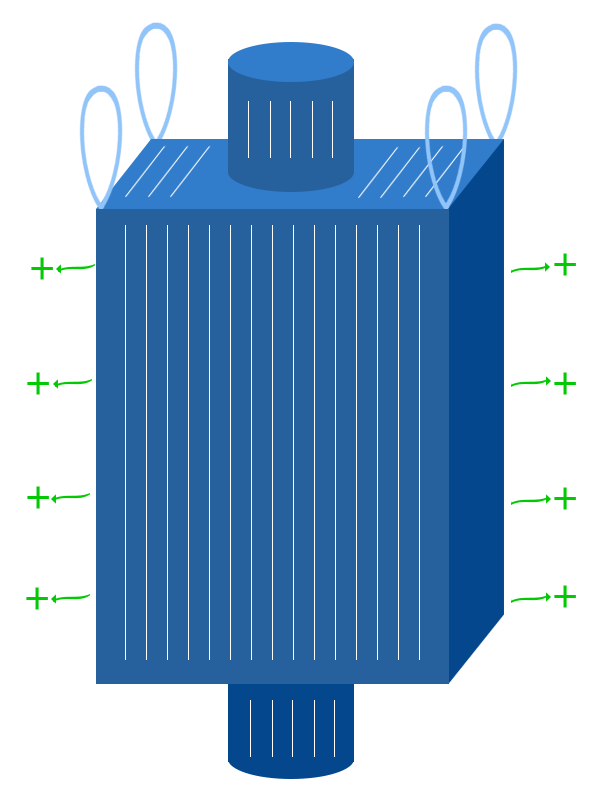
Type D FIBCs are made from antistatic and static dissipative fabrics designed to safely prevent the occurrence of incendiary sparks, brush discharges and propagating brush discharges without the need for a connection from the FIBC to a designated ground/earth.
Type D bulk bags such as Crohmiq™ bulk bags are manufactured with fabric containing quasi-conductive yarns that safely dissipate static electricity into the atmosphere via safe, low-energy corona discharge. Type D FIBCs can be used to safely package combustible products and handle products in combustible and flammable environments.
Safe use for Type D bulk bags:
Do not use type D bulk bags for:
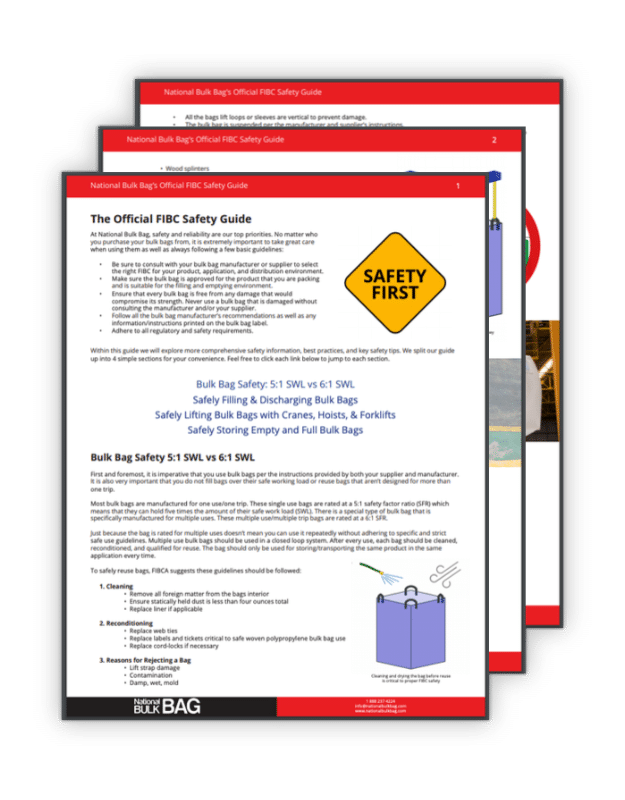
At National Bulk Bag, safety and reliability are our top priorities. National Bulk Bag’s Official FIBC Safety Guide is split up into four sections for your convenience and contains comprehensive safety information, best practices, and key safety tips.
Click the button below to download National Bulk Bag’s Official FIBC Safety Guide!
——— Blog & Resources ———
NATIONAL BULK BAG BLOG
It is crucial that you take great care when handling FIBCs. Full bags are extremely heavy (some weighing up to 5,000 lbs.) and when not…
When storing both empty and full bags, it’s crucial that you take great care in store your bags properly. In this post we cover safe…
When filling and discharging bags it is imperative that at all times all personnel take the necessary safety precautions and are aware of their surroundings.…
Bulk Bag
Buyer Tools